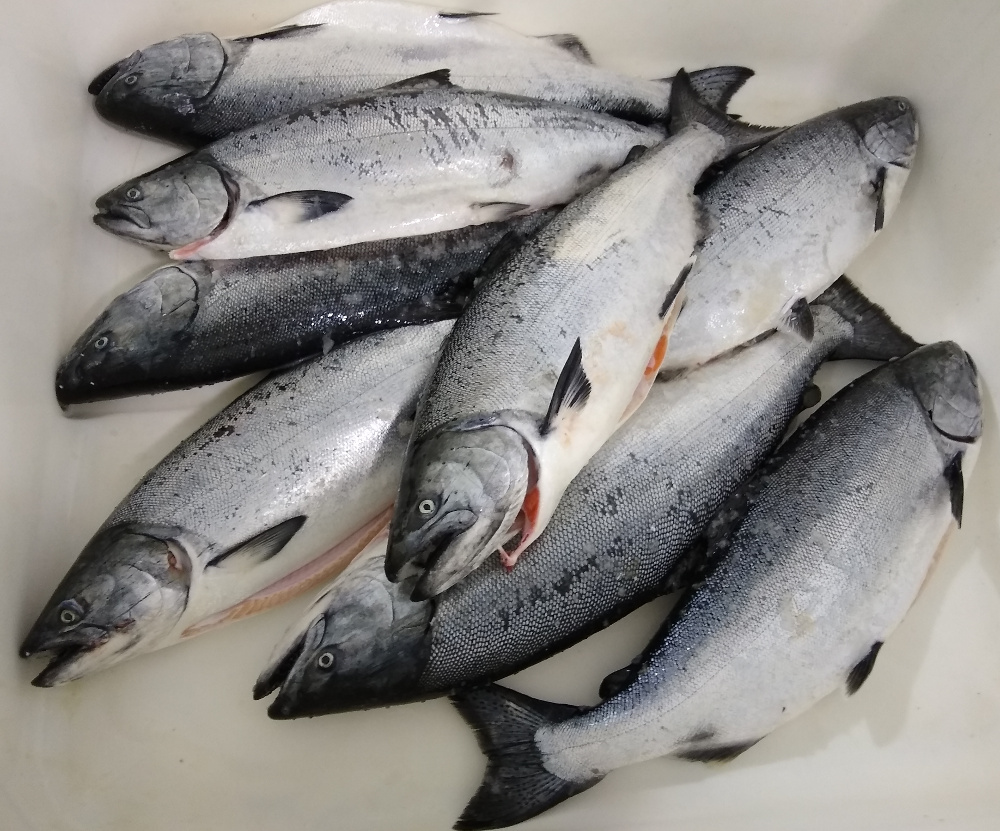
The number of salmon stocks in Southeast Alaska listed as stocks of concern could be increasing next year. The Alaska Department of Fish and Game has recommended the addition of some king, sockeye and pink salmon populations from around the region to the list of those already seeing chronically low returns.
A stock of concern listing means that population is repeatedly falling short of state goals for the number of fish that surviving and making it back to spawning waters. In Alaska, most of those are chinook salmon stocks. In Southeast three already listed king stocks are on the Chilkat River near Haines, King Salmon River south of Juneau and the Unuk River north of Ketchikan.
“With the current situation in Southeast Alaska I would say that the proposed recommendations, the recommendations are more than warranted and unfortunately it comes at a cost of opportunity to the user groups and it’s just the way the ball’s rolling right now,” said Ed Jones fish and game coordinator for the agency’s sportfish division. “The one thing that I will say about these king salmon stocks is that history’s shown that when they do turn the corner and come back, they do so pretty dramatically. They usually, it doesn’t take them very much time at all to turn around and be in high production mode.”
Jones said some of the stocks have trended upward slightly in recent years but still do not have a good outlook.
Another already listed stock is sockeye salmon that spawn in MacDonald Lake between Wrangell and Ketchikan. And that’s one that’s been on and off the list in the past two decades.
Listing a stock results in an action plan for management measures meant to reduce harvest of those fish and aimed to help a stock rebound. That has meant close areas and shortened time for commercial, sport and subsistence fishing. The designations are reviewed every three years as part of the regular Board of Fisheries cycle. Stocks that rebound and start meeting goals can be delisted and action plans removed. But the department says none of the four currently listed have improved enough for that change.
And it has recommending six others be added. Those are king salmon on the Stikine River near Wrangell and one of its tributaries, Andrews Creek. Other recommendations are for king salmon on the Taku River near Juneau and the Chickamin River northeast of Ketchikan. The department’s also recommending listing sockeye salmon on the Klukshu River, a tributary of the Alsek River southeast of Yakutat. Three of those recommendations are for waterway that cross the border with Canada and are governed by the Pacific Salmon Treaty between the two countries.
“You know obviously for those system both countries are going to take management measures to meet escapement,” said Troy Thynes, Fish and Game’s region one management coordinator for commercial fisheries. “We have been doing that in the U.S. fisheries, Alaska fisheries for the past several years and have been taken some fairly major restrictions already in those fisheries, the sport, commercial and subsistence fisheries.”
Department officials said those steps have dramatically reduced harvest. For example on the Taku River kings Fish and Game’s Jones said the harvest rate has been cut from 20-25 percent of a king run, down to around two percent in recent years.
“So although the runs still aren’t doing well at all, we’ve done a very good job in my opinion of passing what few fish are coming back to the spawning grounds to ideally help future production out,” Jones said.
And those fishing restrictions could continue with these listings. But fishery managers are also nearing the limits of measures they can take to help out those stocks.
Commercial fishing industry groups support the state agency’s efforts to protect these underperforming salmon stocks.
Alaska Trollers Association executive director Amy Daugherty said king salmon returns this year were a real disappointment.
“We default back to our managers and we truly want our stocks, those stocks, those local rivers to improve and we’ll just have to hope that some real research is done to find out what is going on,” Daugherty said.
Kathy Hansen, sounded a similar note. She’s executive director of the Southeast Alaska Fishermen’s Alliance, which represents multiple commercial fishing gear groups.
“Do I think the chinook stock will rebound, yes I do think they will eventually rebound, the question is is how soon what other mitigating factors are affecting the runs that we just haven’t yet pinpointed,” Hansen said.
Hansen’s not expecting a big change for fishing opportunity with the additional listings since conservation measures have already been in place.
Susan Doherty is executive director of Southeast Alaska Seiners Association, which represents purse seine fishermen. She thinks Fish and Game has done a good job of taking steps to reduce catches of those fish.
“It’s Fish and Game’s due diligence and the Board of Fish’s due diligence to make sure we’re managing for sustainable yield and part of that is you have to have a return that will perpetuate another return,” Doherty said. “So I applaud Fish and Game for their effort and yeah, they’re just doing their job. There’s just so much information we don’t know.”
The board is expected to take up those listing recommendations at the next Southeast finfish meeting, which is now scheduled for next April.
A sixth recommendation is for pink salmon on the inside waters of the northern panhandle. The Board of Fisheries has decided not to consider that listing however. Pink salmon return to spawn every two years and don’t fit well into this type of longer term listing and action plan. As it is, Fish and Game has already curtailed seine fishing on those stocks during many recent even years.









